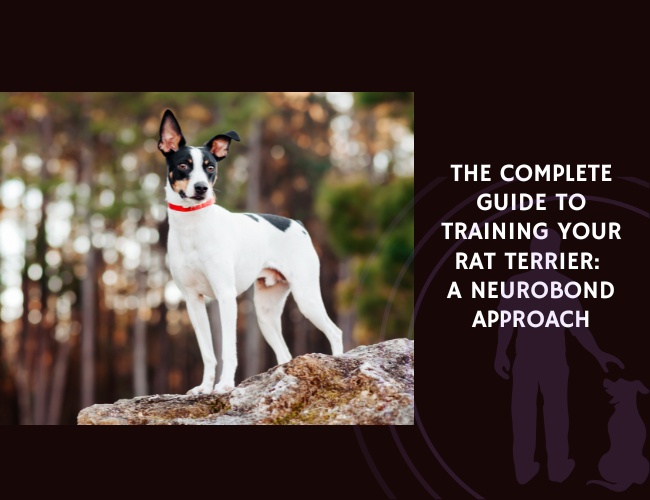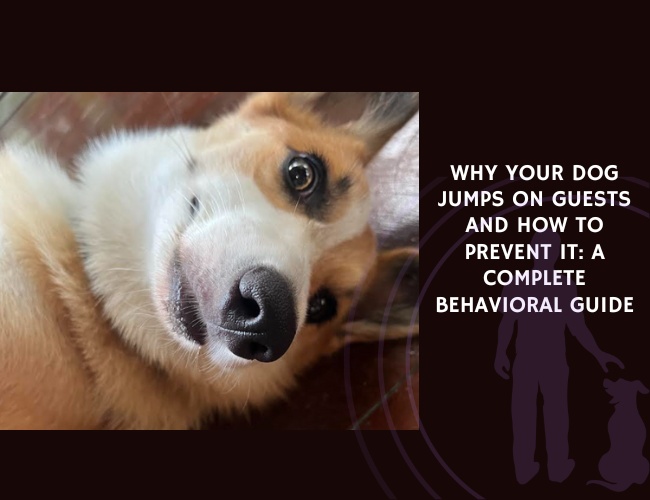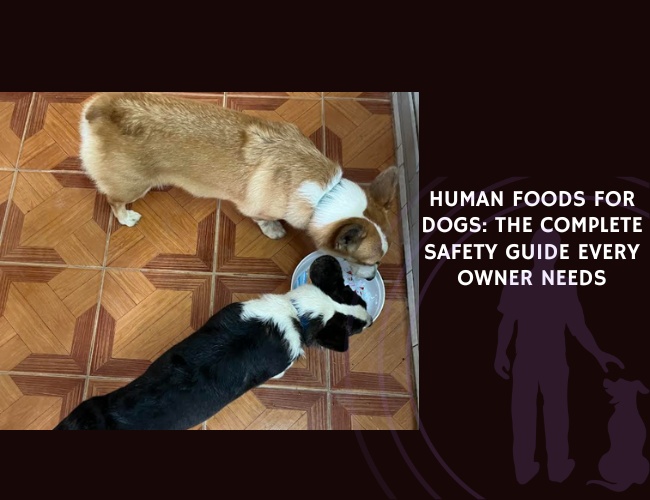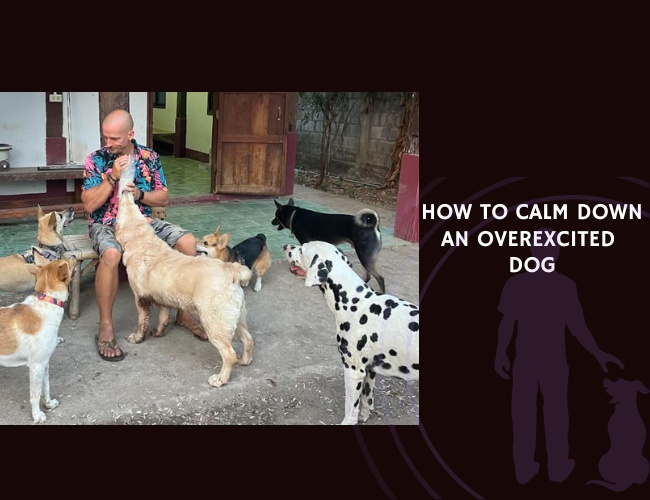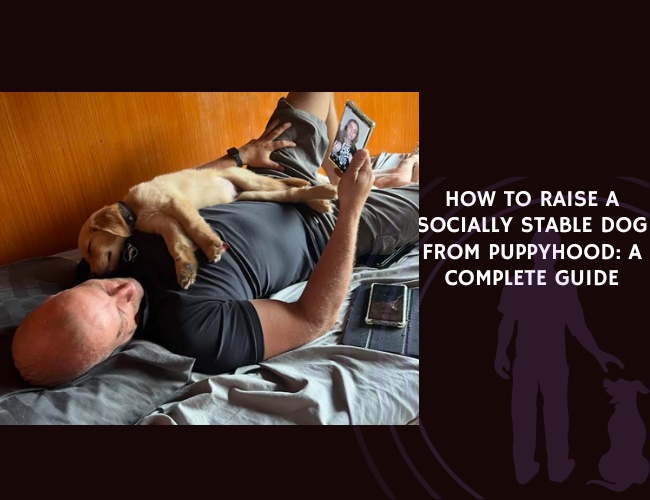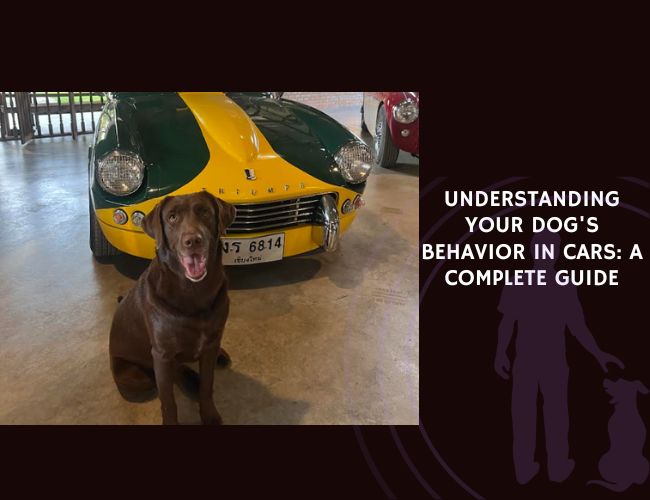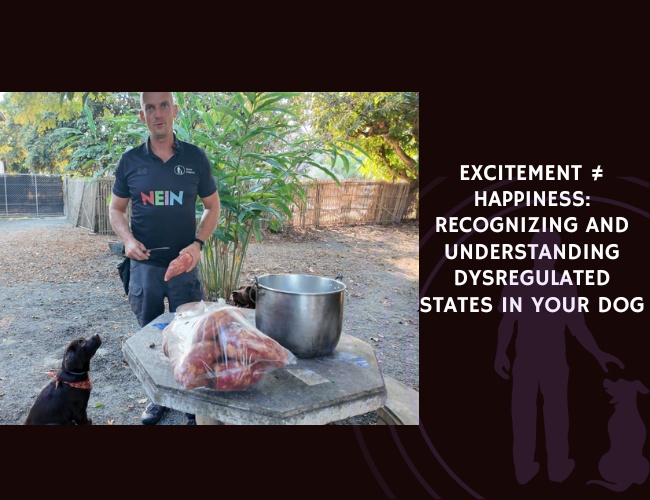Introduction: Understanding Your Spirited Companion
Your Rat Terrier isn’t just another small dog—they’re a whirlwind of intelligence wrapped in a compact, muscular frame, carrying centuries of working dog heritage in their DNA. Originally bred to rid farms of vermin, these remarkable dogs bring that same tenacity, problem-solving ability, and independent spirit into your home. Let us guide you through a training approach that honors their nature while building an unbreakable bond between you and your spirited companion.
The NeuroBond approach recognizes that your Rat Terrier’s seemingly stubborn moments aren’t defiance—they’re expressions of a deeply intelligent mind that’s been bred to think independently and solve problems creatively. When you understand this, training transforms from a battle of wills into a collaborative journey where your dog’s natural instincts become the pathway to remarkable partnership. 🐾
Character & Behavior: The Rat Terrier Mind
The Duality of Independence and Devotion
Your Rat Terrier lives in an interesting psychological space—they’re simultaneously independent thinkers and devoted companions. This duality stems from their breeding history: they needed to work autonomously when hunting rats in barns, yet remain responsive to their farmer’s needs. You might notice this manifests as a dog who can entertain themselves for hours with a puzzle toy, yet checks in with you regularly for reassurance and connection.
The “Big Dog, Small Body” Personality emerges from what researchers call terrier confidence—your Rat Terrier genuinely doesn’t realize they’re small. This self-perception affects their amygdala response to perceived threats, making them more likely to stand their ground rather than flee. In the NeuroBond framework, we don’t suppress this confidence; instead, we channel it into constructive leadership behaviors where your dog learns to look to you for guidance in uncertain situations.
Energy Regulation and Focus present unique training considerations. Unlike hyperactive breeds, Rat Terriers possess what we call “adaptive energy”—they tailor their activity level to match their household’s rhythm. This neurological flexibility means they can transition from intense play to calm companionship, but only when their mental stimulation needs are met. Without proper engagement, that sharp mind turns toward creative problem-solving that you might not appreciate—like figuring out how to open cabinet doors or excavate your garden.
The Prey Drive Factor
The neurological wiring for prey drive in your Rat Terrier runs deep—it’s not just behavior, it’s hardwired into their motor cortex and visual processing centers. When they spot movement, their brain releases a cascade of dopamine that makes chasing feel incredibly rewarding. This is why traditional “leave it” commands often fail; you’re fighting against millions of years of evolutionary programming.
The NeuroBond Foundation: Building Trust Before Training
Creating the Invisible Leash
Before teaching a single command, the NeuroBond approach focuses on establishing what we call the “invisible leash”—a psychological connection so strong that your Rat Terrier naturally chooses proximity to you over pursuing distractions. This isn’t achieved through dominance or control, but through becoming the most interesting, rewarding presence in your dog’s world.
The Check-In Behavior becomes your foundation. Start by simply existing near your Rat Terrier without demanding anything. When they naturally glance at you—even for a split second—mark that moment with a soft “yes” and deliver a tiny, high-value reward. You’re not teaching a command; you’re rewarding their choice to acknowledge you. Within days, you’ll notice your terrier checking in more frequently, seeking that connection voluntarily.
Trust Through Predictability addresses your Rat Terrier’s cautious nature in new situations. These dogs have what neuroscientists call “high environmental vigilance”—their brains are constantly scanning for changes and potential threats. By maintaining consistent routines and responses, you become their safe harbor in an unpredictable world. This doesn’t mean rigid schedules, but rather predictable patterns of interaction that help regulate their stress response system.
Understanding Terrier Logic
Your Rat Terrier operates on what we call “terrier logic”—a problem-solving framework that prioritizes efficiency and results over human preferences. When your dog digs under the fence, they’re not being naughty; they’ve identified a problem (something interesting is on the other side) and found a solution (go under). The NeuroBond approach doesn’t punish this intelligence; instead, we redirect it by making our solutions more appealing than theirs.
Training Through Instinct: The Natural Learning Pathway
Leveraging the Problem-Solving Mind
Traditional obedience training often frustrates Rat Terriers because it asks them to suppress their natural problem-solving instincts in favor of rote compliance. The NeuroBond method flips this script entirely. We present behaviors as puzzles to solve rather than commands to obey.
The Standing Leash Technique exemplifies this perfectly. Instead of commanding “sit,” simply stand on your leash with enough slack for your dog to stand but not enough to jump. Your Rat Terrier’s analytical mind immediately engages: “I want to move, but I can’t. What are my options?” When they naturally sit or lie down—their own solution—you mark and reward enthusiastically. They’ve not only learned the behavior but discovered it themselves, making it far more likely to stick.
Choice-Based Learning taps into your terrier’s need for autonomy. Present two options: chase the squirrel and hit the end of the leash, or check in with you and receive a jackpot reward. Initially, they’ll test both options—that’s the scientist in them. But Rat Terriers are efficiency experts; once they determine which choice yields better results, they’ll consistently make the smart choice. You’re not controlling them; you’re influencing their decision-making matrix.
Redirecting the Prey Drive
Rather than futilely attempting to eliminate prey drive, we harness it constructively. Your Rat Terrier’s chase instinct can become the foundation for remarkable recall, agility work, and even therapy dog skills when properly channeled.
The Flirt Pole Protocol transforms prey drive into a training tool. Using a flirt pole (essentially a fishing rod with a toy attached), you control the “prey” while teaching impulse control. Start with your terrier on leash. Move the toy erratically to trigger their chase instinct, then freeze. The moment they stop pulling and look at you—even accidentally—mark and allow them to catch the toy. You’re teaching them that controlling their impulse leads to capturing their prize, not wild chasing.
Communication Patterns: Speaking Terrier
The Alert System
Your Rat Terrier’s vocalizations aren’t random—they’re a sophisticated communication system that you can learn to read and redirect. Unlike “yappy” dogs who bark from anxiety, Rat Terriers bark with purpose: alerting, requesting, or problem-solving.
Decoding the Bark Types:
- The sharp, rapid “intruder alert” bark activates when they detect changes in their environment
- The frustrated “I can’t reach it” bark when problem-solving fails
- The playful “engage with me” bark during interactive moments
- The low, sustained “something’s wrong” bark that indicates genuine concern
In the NeuroBond framework, we don’t suppress these communications—we acknowledge and redirect them. When your terrier alerts to a doorbell, acknowledge with “thank you for telling me,” then redirect to a specific spot where they can observe but not react. You’re validating their instinct while providing structure for expression.
Body Language and Emotional Regulation
Rat Terriers display their emotional states through subtle body language that, once understood, becomes your training roadmap. Their naturally expressive faces—those alert ears and intelligent eyes—telegraph their mental state clearly.
Signs of Engagement vs. Overwhelm:
- Soft, forward-tilted ears indicate curiosity and learning readiness
- Rapid lip licking or yawning suggests rising stress that needs addressing
- The “terrier freeze”—complete stillness while staring—precedes either flight or chase
- Play bows with sustained eye contact show they’re ready for interactive training
When you notice overwhelm signals, the NeuroBond approach doesn’t push through—we pause, reconnect, and simplify. Your Rat Terrier’s sensitive nervous system means they learn better in short, successful sessions than long, frustrating ones.
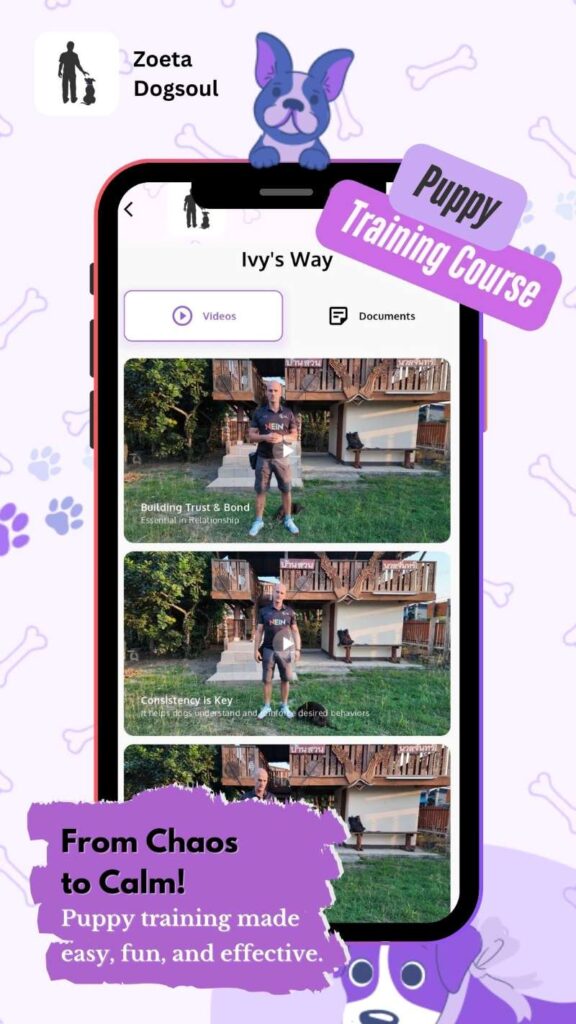
Practical Training Exercises: From Bond to Behavior
The Foundation Four
Before advancing to complex behaviors, master these four foundational exercises that build on your Rat Terrier’s natural instincts:
1. The Voluntary Check-In Start in a boring room with no distractions. Sit quietly with treats hidden in your pocket. Every time your terrier looks at you—no matter how briefly—mark with “yes” and reward. Graduate to more distracting environments only when they’re checking in every 10-15 seconds in the boring room. This becomes your reset button for all future training.
2. The Problem-Solving Sit Never command “sit.” Instead, hold a treat at your terrier’s nose level and slowly move it back over their head. Their analytical mind engages: “I want the treat, but it’s moving up and back. If I jump, it disappears. If I back up, it moves away. If I sit…” When they discover sitting gets the treat, they’ve learned through their own logic, not compliance.
3. The Chase Recall Leverage that prey drive constructively. Have a helper hold your terrier while you run away making excited noises. When released, your dog’s chase instinct kicks in—toward you. As they approach, drop to a crouch (prey animals make themselves small) and reward lavishly when they reach you. You’ve just made yourself the most exciting thing to chase.
4. The Thinking Dog’s Stay Rather than demanding stillness, make staying a puzzle. Start with your terrier on a slightly elevated surface (even a book works). Most dogs naturally pause on elevation changes. Mark and reward the pause, gradually extending duration. They learn that staying is their idea, not your demand.
Advanced Integration: Real-World Application
Leash Walking Without Pulling Your Rat Terrier pulls because their problem-solving mind says “I want to get there faster, so I’ll pull.” Change the equation: pulling makes you stop or change direction, while a loose leash means forward progress. Be prepared for your smart terrier to test this repeatedly at first—they’re verifying the consistency of this new rule. Once confirmed, they’ll adjust their behavior accordingly.
Start in your least exciting environment. Take one step. If the leash stays loose, mark and continue. If it tightens, freeze instantly. Don’t jerk or correct—simply become an immovable object. Your terrier’s mind immediately engages: “Why did we stop?” When they create slack (even accidentally by shifting position), instantly move forward. You’re teaching them they control the walk’s progress through their leash behavior.
The Squirrel Protocol Accept that your Rat Terrier will notice every squirrel, bird, and leaf that moves—their brain is wired for it. Instead of futile “leave it” commands, implement the “see it, check in” protocol. When your dog alerts to prey, wait. The moment they glance back at you (and they will, checking if you noticed too), mark and reward with either a chance to investigate briefly on leash or a high-value treat. You’re not eliminating the prey drive; you’re inserting yourself into the behavioral sequence.
Managing Challenges: When Terrier Tenacity Tests You
The Escape Artist Phenomenon
Your Rat Terrier’s escape attempts aren’t about leaving you—they’re about solving the puzzle of “what’s over there?” Their ancestors needed to pursue rats wherever they fled, developing remarkable problem-solving abilities around barriers. Modern Rat Terriers apply this same ingenuity to your fence, crate, or baby gates.
Physical Management Meets Mental Satisfaction:
- Install coyote rollers or lean-ins on fences to make climbing impossible, not just difficult
- Provide sanctioned digging zones (sandbox with buried toys) to satisfy the digging urge
- Create puzzle feeders and scent games that challenge their problem-solving need safely
- Never chase an escaped terrier—they’ll think it’s a game. Instead, run the opposite direction to trigger their chase instinct toward you
The Boredom-Destruction Connection manifests when your Rat Terrier’s active mind lacks appropriate outlets. That destroyed couch cushion represents two hours of problem-solving: “How is this constructed? What’s inside? Can I improve it?” Prevent destruction by providing legitimate investigation opportunities: cardboard boxes with treats inside, rope toys to unravel, or puzzle toys that change daily.
Socialization Challenges and Cautious Nature
The Rat Terrier’s natural caution in new situations stems from their survival instincts—rushing into unknown barn spaces could mean encountering dangerous animals. This translates to modern wariness of new people, dogs, or environments. The NeuroBond approach respects this caution while building confidence.
The Observation Protocol: Instead of forcing interaction, allow your Rat Terrier to observe from a comfortable distance. Set up a chair 20 feet from a dog park and simply sit. Let your terrier watch and process. When they show relaxed body language (soft ears, loose tail), mark and reward. Gradually decrease distance over multiple sessions. You’re teaching them that observation and assessment are acceptable—they don’t need to react immediately.
The Choice-Based Greeting: When meeting new people, instruct them to ignore your dog completely. Toss treats behind your terrier so they must turn away from the person to get them. This removes pressure and allows your dog to choose when to investigate. Most Rat Terriers, once they realize there’s no pressure, become curious and approach on their own terms.
The Stubborn Terrier Myth
What appears as stubbornness is actually your Rat Terrier evaluating whether your request makes sense in their logical framework. They’re not defiant—they’re analytical. When your terrier “refuses” a command they know, they’re likely communicating one of three things:
- “This situation is different” – Context matters enormously to Rat Terriers. Sitting in the kitchen versus sitting at the vet’s office are completely different scenarios in their mind.
- “I have a better idea” – Your terrier might have identified what they believe is a more efficient solution to the problem at hand.
- “I need more information” – Unlike people-pleasing breeds who comply first and think later, Rat Terriers think first. They’re assessing whether compliance is the best option.
The NeuroBond response isn’t to force compliance but to make your solution more appealing than theirs. Increase reward value, decrease difficulty, or change the context to set them up for success.
Spirited. Clever. Connected.
Dual nature defines them. Rat Terriers balance fierce independence with deep devotion, shaped by their history as both hunters and companions. They thrive when their confidence is channeled into trust-driven leadership rather than suppressed.
Prey drive runs deep. Movement sparks powerful dopamine surges that make chasing irresistible. Instead of fighting instinct, training succeeds by redirecting this neurological wiring into controlled, rewarding behaviors.
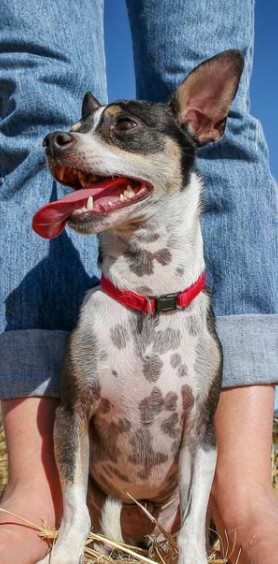
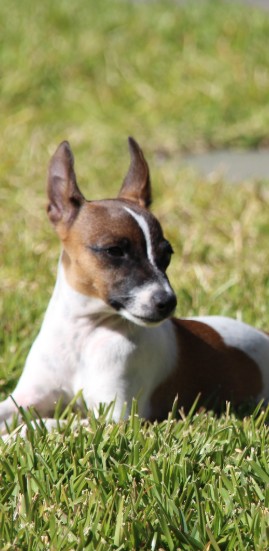

Bond before commands. The invisible leash forms when trust and predictability outweigh distractions. By rewarding natural check-ins and offering stability, you become the center of gravity that guides their sharp, energetic mind.
Exercise and Mental Stimulation: The Energy Equation
Physical Exercise Needs
Your Rat Terrier requires approximately 30-60 minutes of purposeful exercise daily, but quality matters more than quantity. A leisurely walk around the block does little for a dog bred to sprint after fast-moving prey. Instead, incorporate burst activities that mimic their natural hunting patterns.
The Hunt Sequence Workout:
- Search (5 minutes): Hide treats or toys around your yard, engaging their seeking instinct
- Chase (10 minutes): Use a flirt pole or play structured fetch with rules
- Catch (5 minutes): Tug games that allow them to “win” their prey
- Consume (5 minutes): End with a puzzle feeder or chew, mimicking the consumption phase
This 25-minute sequence satisfies their instinctual needs more thoroughly than an hour-long walk, resulting in a calmer, more focused dog for training.
Mental Enrichment Requirements
Your Rat Terrier’s brain needs exercise as much as their body—perhaps more. Mental fatigue creates the calm, satisfied dog that physical exercise alone cannot achieve. These activities tap into their problem-solving nature while building the human-dog bond.
Scent Work Development: Start simple: hide a treat under one of three cups while your terrier watches. Release them to find it. Once mastered, hide treats when they’re out of the room. Progress to hiding favorite toys, then teaching them to find specific scented objects. This engages their seeking system while providing the satisfaction of successful problem-solving.
The Daily Training Game: Dedicate 5-10 minutes daily to teaching new tricks or behaviors—not for obedience, but for mental engagement. Rat Terriers thrive on novelty. Teach unusual tricks like “play dead,” “spin,” or “find my keys.” The specific behavior matters less than the mental engagement of learning something new.
Health and Training Interconnection
Neurological Health Considerations
Certain health conditions common in Rat Terriers can significantly impact training success. Understanding these connections helps you adjust expectations and methods appropriately.
Patellar Luxation and Movement-Based Training: Many Rat Terriers experience varying degrees of knee instability. This can make certain positions uncomfortable, affecting their willingness to perform sits or downs. If your terrier seems “stubborn” about these positions, have their knees evaluated. Adjust training to use stands and touches instead of sits when necessary.
Age-Related Cognitive Changes: Rat Terriers over 8 years may show signs of cognitive dysfunction, affecting their learning and retention. Signs include confusion in familiar places, changes in sleep patterns, or forgetting previously learned behaviors. Adapt training by:
- Increasing reward frequency and value
- Shortening training sessions to 2-3 minutes
- Focusing on maintaining existing skills rather than teaching new ones
- Using scent and touch cues to supplement verbal commands
Nutrition’s Role in Trainability
Your Rat Terrier’s diet directly impacts their ability to focus and learn. Blood sugar fluctuations can create hyperactivity or lethargy, both impediments to effective training.
Training Treat Strategy:
- Use single-ingredient proteins for high-value rewards (freeze-dried liver, chicken)
- Reserve their regular kibble for low-distraction training
- Account for training treats in daily calorie intake—Rat Terriers gain weight easily
- Train before meals when food motivation peaks
The Lifestyle Integration: Living with a Trained Rat Terrier
Creating the Structured Freedom
The ultimate goal of NeuroBond training isn’t a robot-dog who obeys commands mindlessly, but a thinking partner who makes good choices independently. Your trained Rat Terrier should demonstrate what we call “structured freedom”—liberty within boundaries they understand and respect.
The House Rules Framework: Establish clear, consistent boundaries that make sense in terrier logic:
- Furniture privileges are yes or no, never sometimes
- Door protocols remain consistent (wait for release before exiting)
- Meal times follow predictable patterns
- Play has beginning and ending signals
Your Rat Terrier’s analytical mind thrives on understanding the rules of their world. Inconsistency creates anxiety and testing behaviors as they try to determine the actual boundaries.
The Family Dynamic
Rat Terriers often bond intensely with one person while remaining affectionate with the whole family. This can create training challenges when different family members have different relationships with the dog.
Establishing Consistent Leadership: Every family member should practice the foundation exercises, but accept that your Rat Terrier may respond differently to different people. This isn’t disrespect—it’s their assessment of each relationship. The key is consistency in expectations, even if the relationship dynamics vary.
Children should learn to respect the terrier’s space and communications. Teach kids to recognize when the dog needs breaks and to participate in training games that build positive associations. Your Rat Terrier can become an excellent family dog when children understand they’re interacting with an intelligent being, not a toy.
Multi-Pet Households
Your Rat Terrier’s prey drive complicates relationships with smaller pets, while their terrier confidence can create friction with larger dogs. Success requires careful management and realistic expectations.
Small Animal Protocols: Accept that your Rat Terrier may never be safe with pet rodents, birds, or rabbits. Their prey drive, refined over centuries, can activate instantly even after years of peaceful coexistence. Management, not training, is your primary tool here. Use secure barriers and never leave them unsupervised together.
Dog-to-Dog Relationships: Rat Terriers often prefer being the only dog or living with one calm companion. Their tendency to resource guard and their “big dog” attitude can create conflicts. Successful multi-dog households require:
- Separate feeding stations
- Individual training sessions
- Regulated play with clear interruption signals
- Respect for your terrier’s need for personal space

Senior Rat Terrier Considerations
Maintaining Mental Sharpness
As your Rat Terrier ages, maintaining cognitive function becomes as important as physical health. Their intelligent minds need continued stimulation to prevent cognitive decline.
Adapted Training for Seniors:
- Introduce new scent games that don’t require physical agility
- Practice known behaviors in new locations to maintain neural flexibility
- Use puzzle feeders that challenge without frustrating
- Maintain social interactions with familiar dogs and people
The NeuroBond connection becomes even more critical as your senior terrier’s world shrinks. They rely more heavily on the security of your relationship when their senses and mobility decline.
Adjusting Expectations
Your senior Rat Terrier may develop what appears to be selective hearing or increased stubbornness. Often, this reflects physical changes rather than behavioral ones. Hearing loss, vision changes, or arthritis pain can all affect training responsiveness.
Compassionate Adaptations:
- Use hand signals to supplement verbal cues
- Increase contrast in training environments for dogs with vision changes
- Allow more time for position changes in dogs with arthritis
- Celebrate maintenance of skills rather than demanding perfection
Remember, your senior Rat Terrier has given you years of companionship. The NeuroBond approach emphasizes connection over performance—maintaining that emotional link matters more than perfect obedience.
Troubleshooting Common Training Obstacles
When Progress Stalls
Every Rat Terrier owner encounters training plateaus where progress seems to stop. This often indicates you’ve hit the limit of your current approach, not your dog’s capability.
The Three-Step Reset:
- Simplify: Break the behavior into smaller components. If recall fails at the park, practice in the hallway.
- Increase Value: Your rewards may have become predictable. Introduce novel rewards or randomize reinforcement schedules.
- Change Context: Practice in new environments or at different times. Your terrier’s analytical mind engages when patterns change.
Regression in Trained Behaviors
Rat Terriers may suddenly “forget” well-established behaviors, frustrating owners who thought training was complete. This regression usually signals:
Environmental Changes: New household members, schedule changes, or moving homes can trigger uncertainty. Return to foundation exercises to rebuild confidence.
Health Issues: Sudden behavioral changes warrant veterinary examination. Pain, hormonal changes, or neurological issues can manifest as training regression.
Reinforcement Fade: Without occasional practice and reward, even well-trained behaviors extinguish. Implement “maintenance training”—brief, rewarded practice of known behaviors.
The “Only Listens to One Person” Phenomenon
Many Rat Terriers become “one-person dogs” who seem to ignore other family members. This reflects their tendency to bond intensely with their primary caregiver rather than true disobedience.
Building Secondary Bonds:
- Have other family members become the sole source of meals for a week
- Assign specific activities to different people (Dad does walks, Mom does training, kids do play)
- Practice “transfer exercises” where the primary person cues a behavior, then the secondary person rewards
- Ensure all family members use identical cues and reward markers
The Long-Term Journey: Beyond Basic Training
Advanced Activities for the Thinking Terrier
Your trained Rat Terrier’s capabilities extend far beyond basic obedience. Their intelligence and athleticism make them candidates for numerous advanced activities that deepen your bond while providing mental stimulation.
Barn Hunt: This sport taps directly into your Rat Terrier’s genetic heritage. They search for safely contained rats hidden in hay bale mazes, using their problem-solving skills and prey drive constructively. Many Rat Terriers excel immediately, as if remembering ancestral memories.
Agility: The combination of physical and mental challenges in agility suits the Rat Terrier perfectly. Their compact size and quick thinking make them competitive despite not being traditional agility breeds. Start with foundation exercises focusing on body awareness and handler focus before introducing equipment.
Nose Work: Formal scent detection training engages your terrier’s seeking system while providing calm, focused activity suitable even for seniors. The progression from finding treats to identifying specific odors satisfies their need for problem-solving without physical stress.
Maintaining the NeuroBond Through Life Changes
Life inevitably brings changes—moves, new family members, schedule shifts—that can stress the human-dog relationship. The NeuroBond approach provides stability through transitions.
During Major Changes:
- Maintain at least one consistent routine (morning training game, evening cuddle time)
- Increase check-in rewards to reinforce connection during uncertainty
- Allow additional processing time for new situations
- Return to foundation exercises if stress behaviors emerge
Your Rat Terrier’s adaptability improves when they trust that your relationship remains constant despite environmental changes. The invisible leash you’ve built becomes their anchor in unfamiliar situations.
Conclusion: Is the NeuroBond Approach Right for You and Your Rat Terrier?
The NeuroBond training philosophy asks you to see your Rat Terrier not as a pet to be commanded, but as an intelligent partner to collaborate with. It requires patience to let them find solutions, wisdom to guide without forcing, and respect for their independent nature while building voluntary connection.
Ask yourself:
- Can you appreciate a dog who thinks before obeying?
- Will you find joy in watching your terrier puzzle through challenges?
- Can you provide the mental stimulation this brilliant breed requires?
- Are you prepared to be outsmarted occasionally by a 20-pound genius?
- Will you commit to building connection over demanding compliance?
If you answered yes, then you’re ready to experience the remarkable partnership possible with a Rat Terrier trained through the NeuroBond approach. Your journey won’t always be smooth—expect your terrier to test boundaries, question logic, and occasionally decide their solution surpasses yours. But when that sharp mind chooses to work with you, when those bright eyes check in during a moment of excitement, when that independent spirit decides you’re worth following—you’ll understand that you haven’t just trained a dog. You’ve built a partnership with one of the most intelligent, devoted companions the canine world offers.
The invisible leash you create through trust, respect, and understanding becomes stronger than any physical restraint. Your Rat Terrier doesn’t obey because they must, but because they’ve chosen to align their remarkable problem-solving abilities with your guidance. That choice, renewed daily through your continued connection, creates the kind of relationship that transforms both human and dog.
Welcome to the journey of training your Rat Terrier the NeuroBond way—where every challenge becomes an opportunity to deepen understanding, every success strengthens your connection, and every day brings new possibilities for partnership. Your spirited, intelligent, sometimes stubborn, always devoted Rat Terrier is waiting to show you just how extraordinary this relationship can become. 🧡

